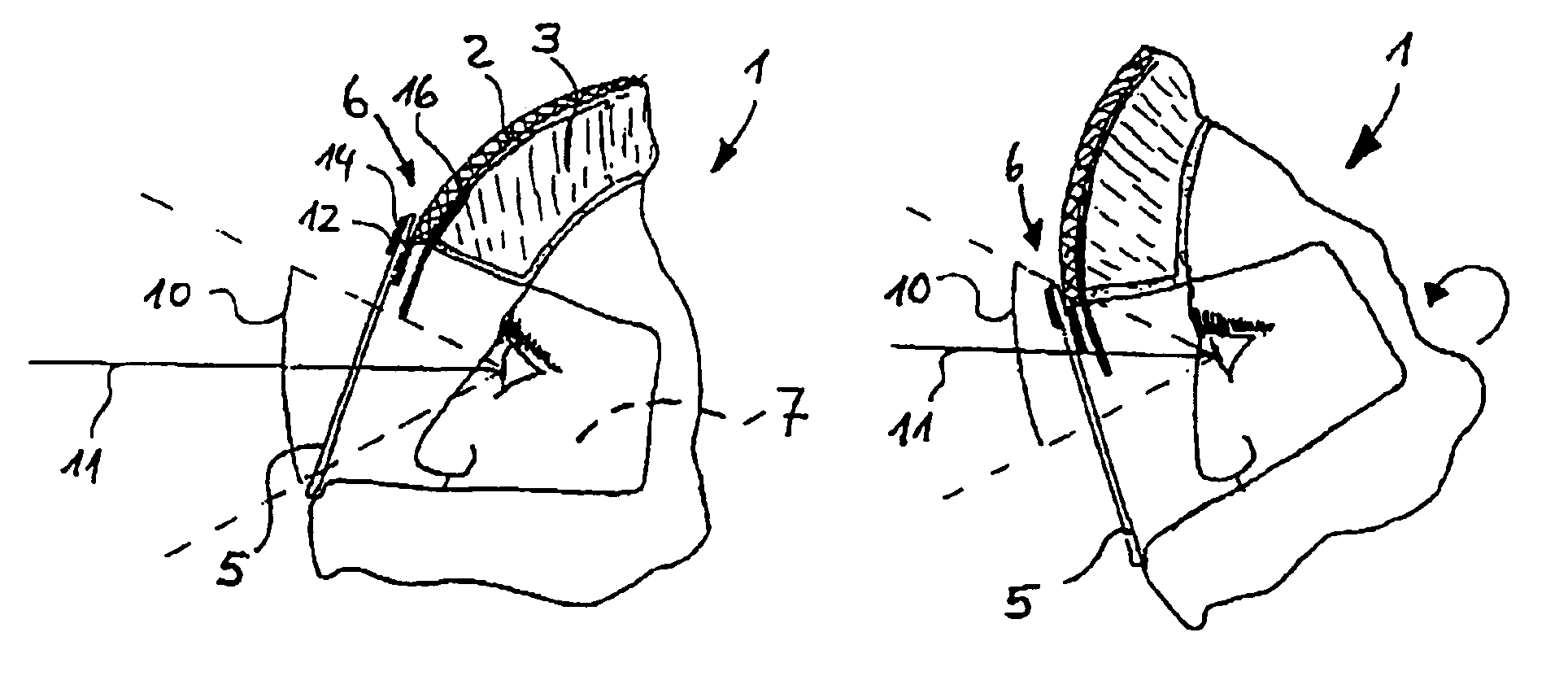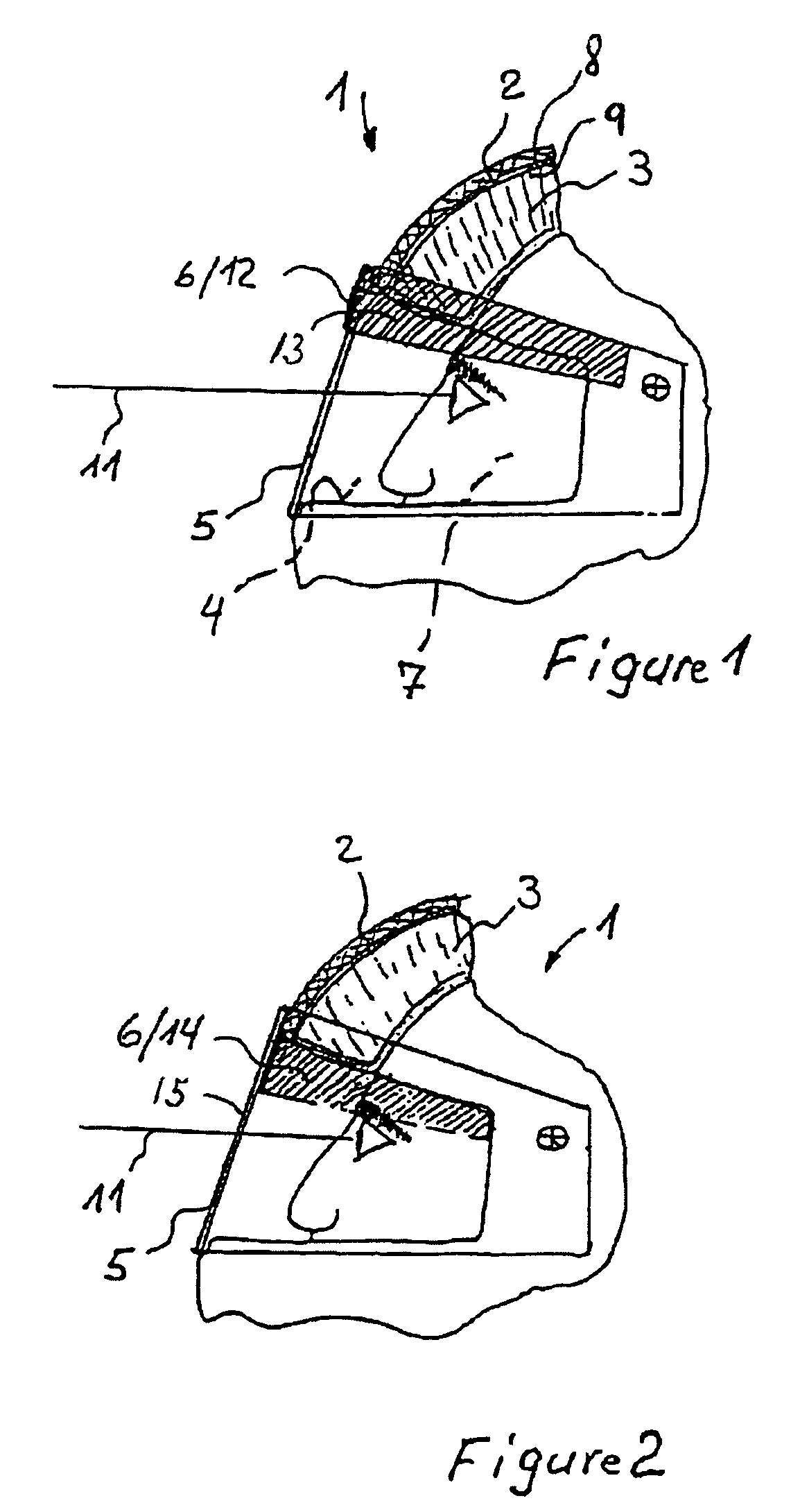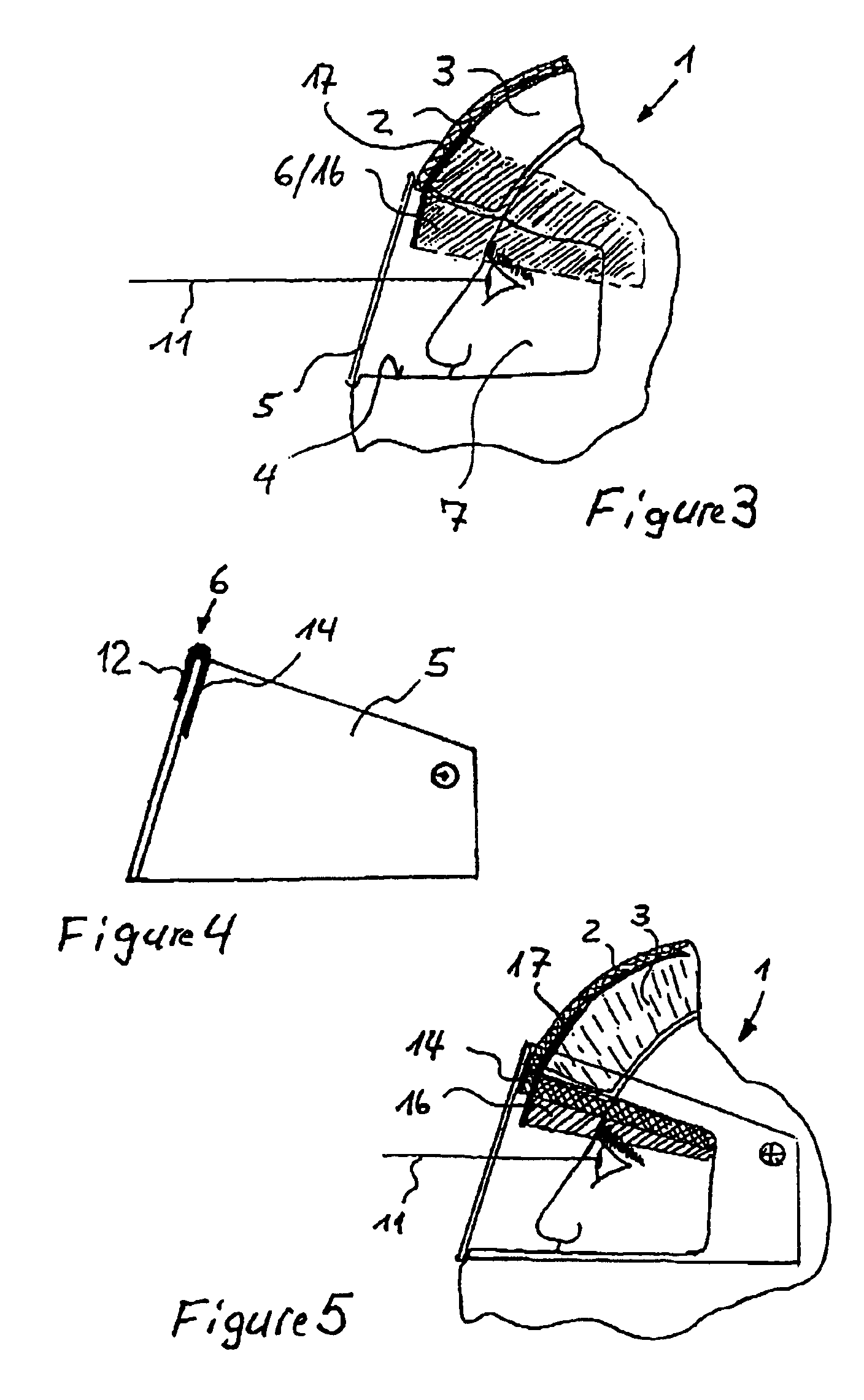Antiglare system for a crash helmet
a technology of antiglare and helmet, which is applied in the field of antiglare system for crash helmets, can solve the problems of premature fatigue of the driver or helmet wearer, pain in the eye, and inability to adapt quickly and effectively enough, and achieve the effect of increasing the tint or antiglare
- Summary
- Abstract
- Description
- Claims
- Application Information
AI Technical Summary
Benefits of technology
Problems solved by technology
Method used
Image
Examples
Embodiment Construction
[0038]An antiglare system according to an embodiment of the present invention includes a crash helmet 1 with an outer helmet shell 2, an inner helmet shell 3, an eyeport 4, a visor 5, and a sunshade 6.
[0039]The hard outer helmet shell 2 is arranged on an outer side 8 of the crash helmet 1 facing away from a helmet wearer 7. The inner helmet shell 3 is arranged on an inner side 9 of the crash helmet 1 facing toward the helmet wearer 7. The inner helmet shell 3 is designed as a deformable and shock-absorbing shell. The eyeport 4 provides the eye of the helmet wearer with a vertical field of vision 10 of greater than 55° in the vertical direction. The eyeport 4 is closed by the visor 5 that can be pushed up and out of the way. The visor 5 is made of a crystal-clear transparent material.
[0040]The sunshade 6 partially covers the eyeport 4 in its upper region in the vertical direction, and specifically, in such a manner that the sunshade 6 is located above a horizontal line of sight 11 an...
PUM
 Login to View More
Login to View More Abstract
Description
Claims
Application Information
 Login to View More
Login to View More - R&D
- Intellectual Property
- Life Sciences
- Materials
- Tech Scout
- Unparalleled Data Quality
- Higher Quality Content
- 60% Fewer Hallucinations
Browse by: Latest US Patents, China's latest patents, Technical Efficacy Thesaurus, Application Domain, Technology Topic, Popular Technical Reports.
© 2025 PatSnap. All rights reserved.Legal|Privacy policy|Modern Slavery Act Transparency Statement|Sitemap|About US| Contact US: help@patsnap.com



